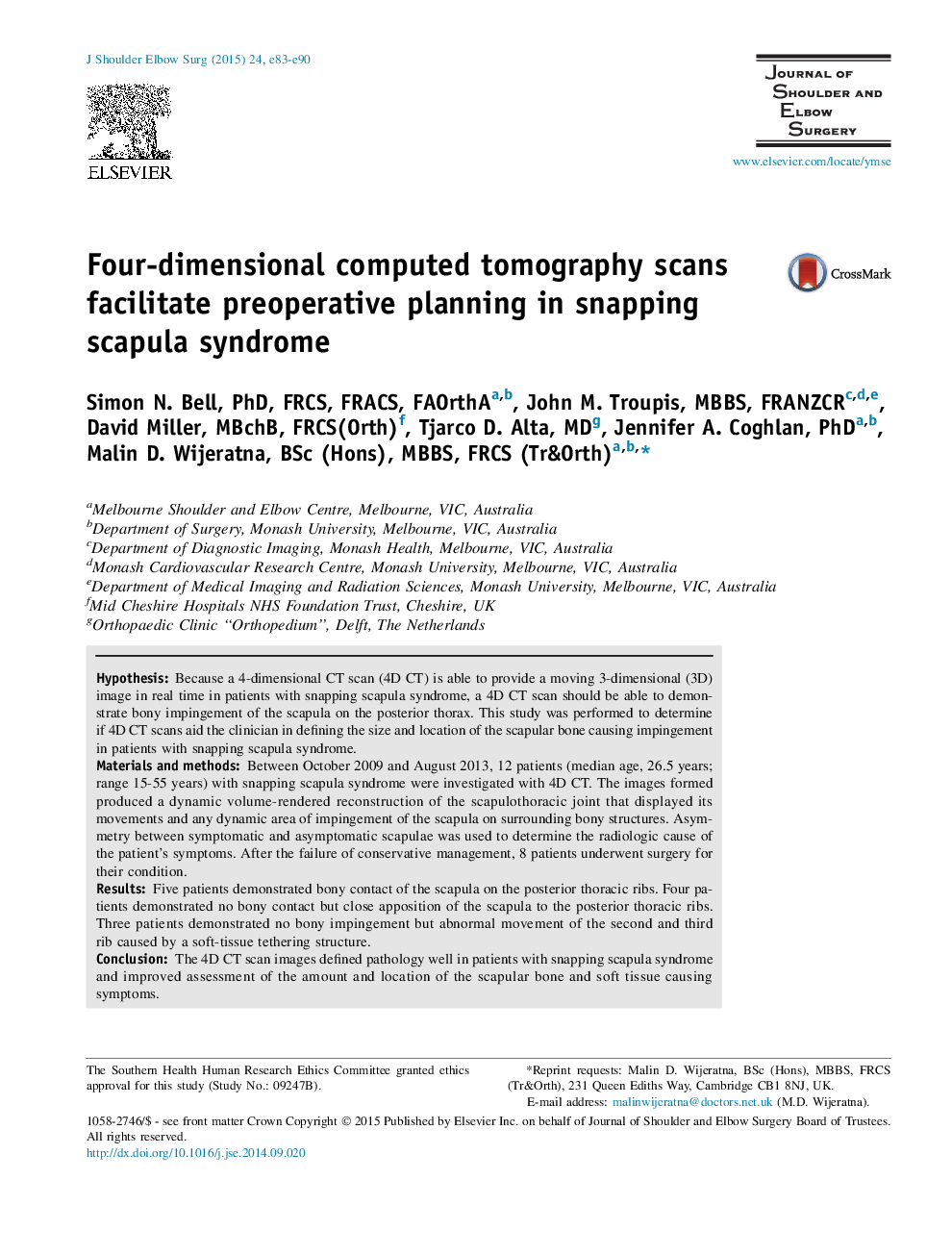| Article ID | Journal | Published Year | Pages | File Type |
|---|---|---|---|---|
| 4073335 | Journal of Shoulder and Elbow Surgery | 2015 | 8 Pages |
HypothesisBecause a 4-dimensional CT scan (4D CT) is able to provide a moving 3-dimensional (3D) image in real time in patients with snapping scapula syndrome, a 4D CT scan should be able to demonstrate bony impingement of the scapula on the posterior thorax. This study was performed to determine if 4D CT scans aid the clinician in defining the size and location of the scapular bone causing impingement in patients with snapping scapula syndrome.Materials and methodsBetween October 2009 and August 2013, 12 patients (median age, 26.5 years; range 15-55 years) with snapping scapula syndrome were investigated with 4D CT. The images formed produced a dynamic volume-rendered reconstruction of the scapulothoracic joint that displayed its movements and any dynamic area of impingement of the scapula on surrounding bony structures. Asymmetry between symptomatic and asymptomatic scapulae was used to determine the radiologic cause of the patient's symptoms. After the failure of conservative management, 8 patients underwent surgery for their condition.ResultsFive patients demonstrated bony contact of the scapula on the posterior thoracic ribs. Four patients demonstrated no bony contact but close apposition of the scapula to the posterior thoracic ribs. Three patients demonstrated no bony impingement but abnormal movement of the second and third rib caused by a soft-tissue tethering structure.ConclusionThe 4D CT scan images defined pathology well in patients with snapping scapula syndrome and improved assessment of the amount and location of the scapular bone and soft tissue causing symptoms.
